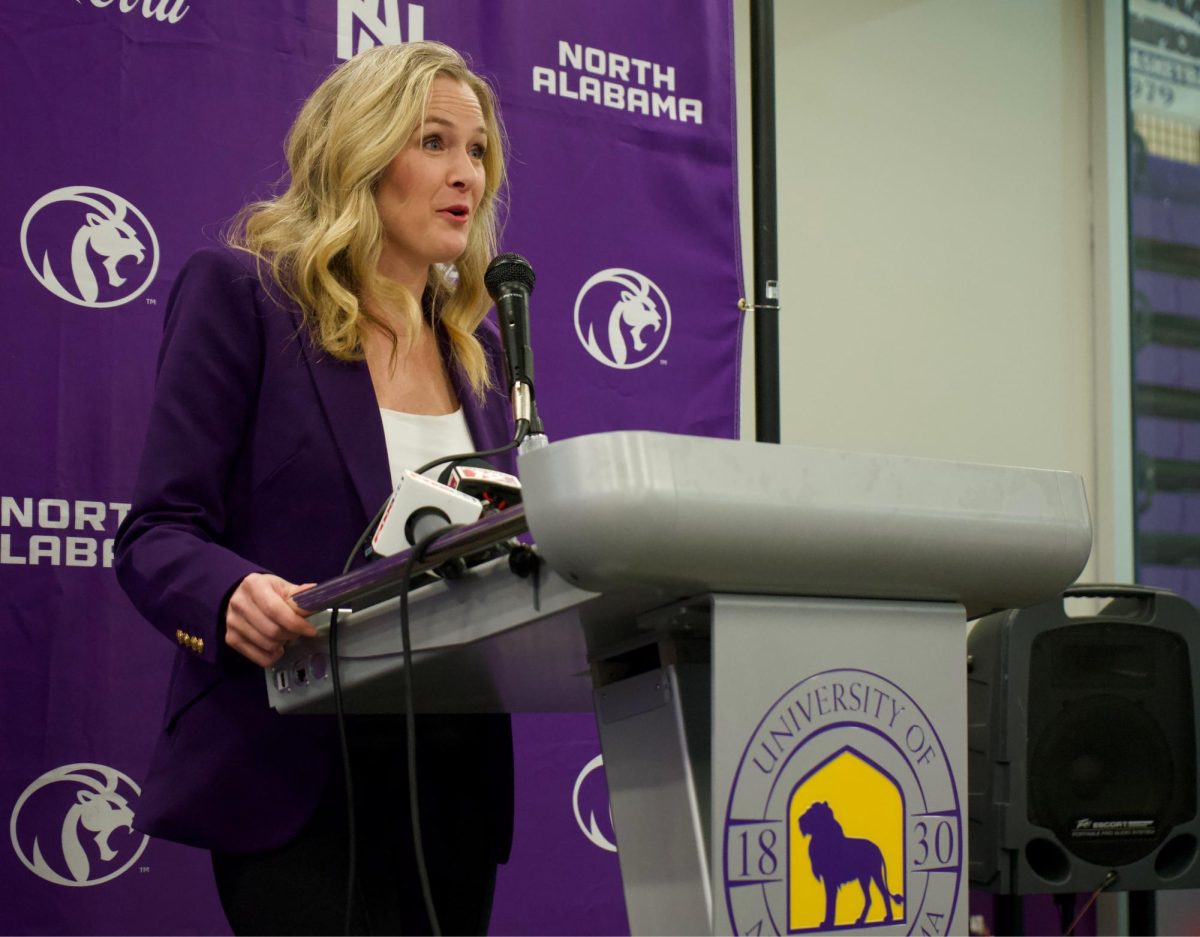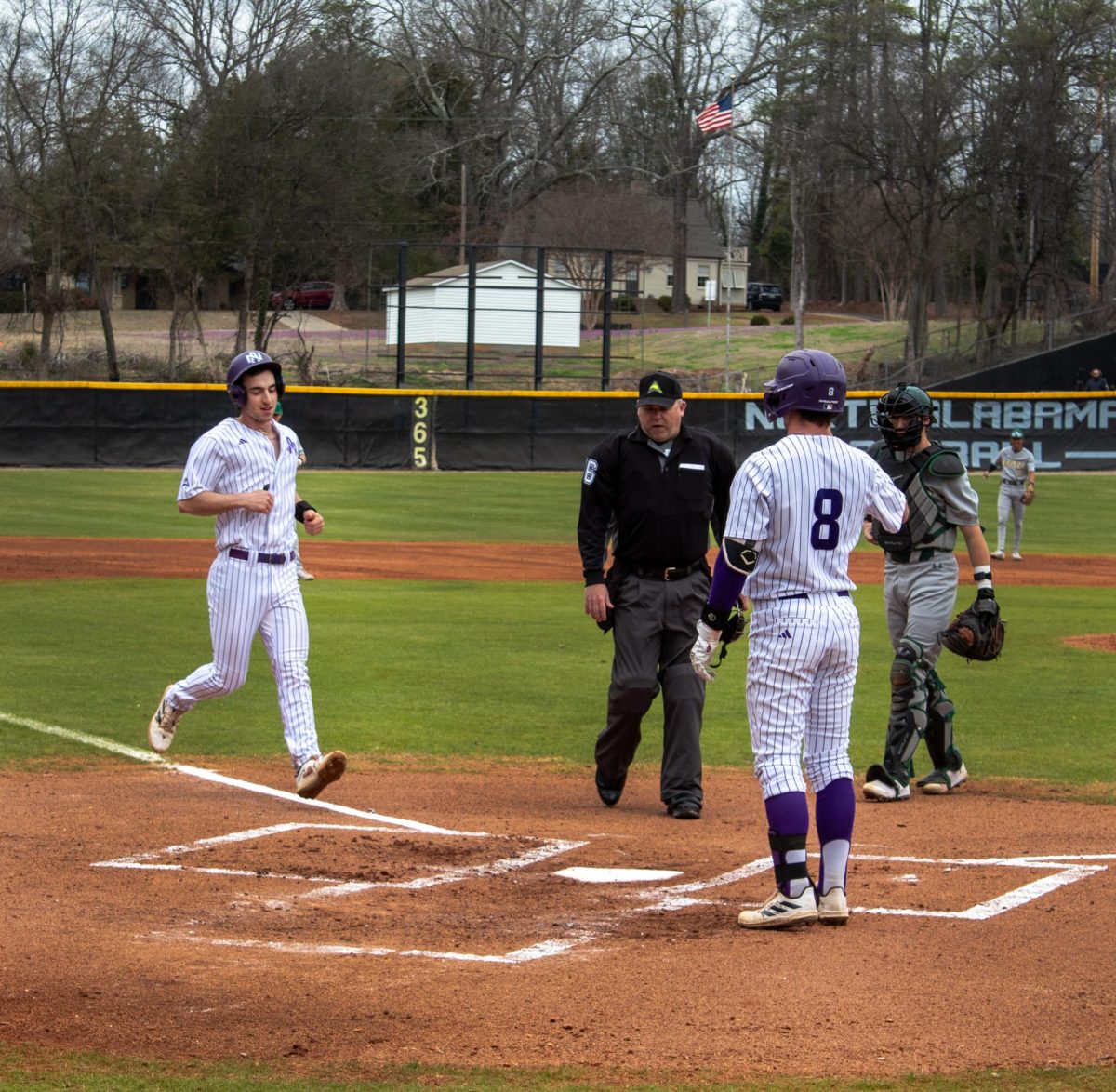The University of North Alabama’s construction of Bank Independent Stadium will create an opportunity to reduce the amount of light pollution on campus and in the surrounding community.
Light pollution is defined as unnecessary light in the sky, and like other types of pollution, it can be harmful to the environment around it.
“This is a serious issue because, number one, it’s harmful to a lot of wildlife, like birds, insects and fish,” said Dr. Melvin Blake, a UNA Physics professor and the director of the UNA Planetarium and Observatory. “It’s also well-known that bad lighting actually creates what we call glare, which makes it difficult to drive your car. It also can help criminals to not be identified because it can make it difficult to see criminals. Most recently, the American Medical Association has come out with a major report where they identified that poor lighting, and lighting at night in general, is bad for human health. When you sleep, your brain produces melatonin, a natural antioxidant which helps your blood get cleaned out. When there’s lighting at night, the melatonin production is suppressed. They’ve noted that people who work at night have higher incidences of cancer. The American Medical Association has put out a major report saying that light pollution is a health hazard and a potential carcinogen.”
Blake and his students have done research on light pollution before, and they plan to set up a light pollution monitor on campus that will record the sky brightness over time. With this data, they can analyze whether the local sky pollution levels are improving or becoming worse. According to Blake, the city of Florence has favorable light pollution policies, though he is unsure of how rigorously they are enforced.
“We have an active observatory where we try to do research, student projects and programs for the public for viewing,” Blake said. “This is why any changes in the lighting conditions are of interest to us.”
Lighting conditions play a large role in determining what is visible from the observatory, and light pollution can limit the visibility tremendously. Large contributors to light pollution for the observatory are the sports fields across the street.
“When the practice field lights or the baseball field lights are on, we essentially can’t look very far over toward the west,” Blake said. “It illuminates that entire part of the sky.”
Because of the light pollution already created in that direction, the construction of Bank Independent Stadium could either have a positive or negative effect on current light pollution levels, depending on the planning of the facility.
“The lighting of the baseball field and practice field are already pretty bad,” Blake said. “The stadium, depending on its size and how much lighting is put in it, could potentially make things better, or it could make things worse. This is an opportunity that, if it’s done properly, we might end up with less light pollution than we already have. That’s the concern. If it’s done in a way that is light pollution-friendly, we could actually end up better off, but if the lights are done the way the current lights are, and it’s a bigger facility, then it could potentially be a lot worse.”
In an effort to improve the lighting for the stadium, Blake wrote a proposition that outlines the risk factors for light pollution, as well as solutions for the potential issues. The proposed solutions include shielding the light, which directs the light only in the direction one wishes it to go; having the lights on a timer, allowing the lights to only be on when necessary; and using lights of lower color temperature, minimizing the harm to melatonin production. The use of proper lighting techniques also has the potential to save the university money over time.
Blake believes that the policy he created should be a general policy, one which would be used campus-wide on any new construction.
“It would be nice if, when we put up bids for new facilities or lighting, one of the requirements is that they follow proper lighting guidelines,” Blake said. “The color temperature, using LED’s, and making sure they’re shielded – all of these things that make proper lighting – we should just make it a policy.”
For the planning of Bank Independent Stadium, the suggestions that Blake made are being considered, which is a step toward minimizing light pollution on campus.
“The re-development of the Bank Independent Stadium site provides opportunities to reduce the University’s current light pollution output while also improving energy efficiency,” said UNA Director of Athletics Dr. Josh Looney. “The current lighting technology at Mike D. Lane Field and the turf facility is nearly three decades old. Bank Independent Stadium provides the opportunity to install LED lighting with lenses that focus lighting output toward the playing field. Improved efficiency will reduce the number of bulbs currently in use at the two complexes. A recent example of improved lighting technology was the installation of new LED lights at Braly Stadium. When Florence City Schools renovated Braly Stadium with LED lighting, it significantly reduced light pollution for the surrounding neighborhood while improving the in-game experience for fans and student-athletes. Multiple lighting poles were eliminated in that renovation, and we are planning for the same at Bank Independent Stadium.”
These plans point not only to a better lighting solution for the stadium, but they also signify a potential shift in lighting around the university, which could minimize the campus’s contributions to light pollution.
“I’m cautiously optimistic,” Blake said. “I mentioned that this was a concern, and I was asked to put together a report. It sounds like this is on their radar, that they’re aware of it and that they want to do better. If we can do that for each building, we can make it so that UNA builds buildings the right way as far as lighting, which would be great.”



![Caleb Crumpton [COURTESY OF UNA SGA]](https://theflorala.com/wp-content/uploads/2024/07/caleb-crumpton-courtesy-of-SGA-850x1200.jpg)











